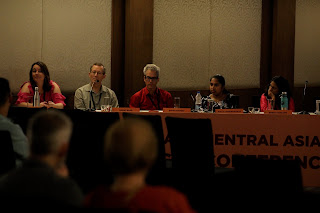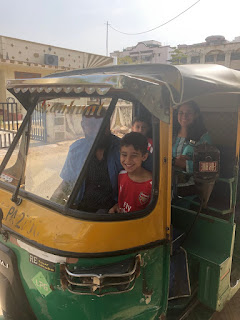My Fulbright Conference Panel Presentation
Educators on Fulbrights really know how to present and make it interactive. Each one of us had a unique way of presenting that was engaging more so than any other panel presentation I attended. All of the other panel presenters, got up spoke about their presentation and used the 15 minutes to run through a powerpoint. Ok not all, but most. And then there was the panel I was on. Truth be told, I thought I was going to be the show stopper with my interactive plan for 15 minutes, but I was wrong. Others on the panel were interactive as well. I am not just saying this because it was the panel I was on, it truly was great to see all the different interactive styles and to know that there are many educators like myself who care deeply about engaging students in their education.
My brain was going too fast and I could not keep up with my brain and the words that were coming out of my mouth which resulted in a convoluted presentation. I could not slow down and then I get the 5-minute warning from the moderator and basically ended my presentation. My saving grace I thought was my handout. I thought at least I had a handout that provided some basic facts to help put it all together, but no one took the handout. I guess I did not make it clear that it was for them to keep. You live and learn. C’est la vie!
*Photo credit goes to Kwang Lee (My co-Fulbright teacher fellow's husband)
I wish that our panel could have met for 30-40
minutes before our presentation and worked together to come up with a unified workshop
that explored all of our projects. The presenters on my panel were so cool and
were doing such amazing things that it could have been fun to learn from each
other while giving some productive takeaways for the participants that came to our
presentation. To come think of it, I am going to give that has constructive feedback
for the USIEF (United States-India Educational Foundation) staff to think about
for future conferences.
My
reflection on my own 15-minute presentation is that if I was to rate it on a
scale of 1-10 (10 being the best), I would rate it a 4. Now you might think I am
being too harsh but I think it is a fair assessment. I worked very hard to
ensure that I did not go over the 15 minutes and wanted to really respect the
other presenters and the question and answer period at the end which I find the
most interesting. With that said, the start of my presentation where the participants
had to create the tallest structure with playing cards in 3 minutes was
fantastic. I worried that no one would do it and people would sit around and
look at each other but I was wrong. Participants jumped right in and had some
fun creations. One person stood on top of their chair with two cards and
another put two cards on top of a speaker. After a lively interaction and great
responses as to some of the skills they got out of the “game”, it went downhill,
hence the 4 rating.
My brain was going too fast and I could not keep up with my brain and the words that were coming out of my mouth which resulted in a convoluted presentation. I could not slow down and then I get the 5-minute warning from the moderator and basically ended my presentation. My saving grace I thought was my handout. I thought at least I had a handout that provided some basic facts to help put it all together, but no one took the handout. I guess I did not make it clear that it was for them to keep. You live and learn. C’est la vie!
*Photo credit goes to Kwang Lee (My co-Fulbright teacher fellow's husband)







Very cool picture of you presenting, Brinda. I think the card game was a great way to hook the audience into your part of the panel. What more would you have talked about to the people there if you had more time? And what are some of the things that the other panelists are doing in their education focus?
ReplyDeleteThank you for the very thoughtful question. If I had more time, I would have liked to go through an example of a mini-YPAR or DTP in a core curriculum and how it can lead to a mid and final assessment which would be a longer YPAR or DTP. The importance is that students are getting exposed to meaningful student-centered and project based work in the classroom.
ReplyDeleteThe other Fulbrighters are working on academic supports for Autism in India, teaching philosophy to children and incorporating Hindu text in children friendly ways in India, analysing how technology plays a role or does not in Gross National Happiness in Bhutan, and developing a bullying curriculum in Uzbekistan.
Some pretty cool stuff. Thanks for reading and posting a comment.